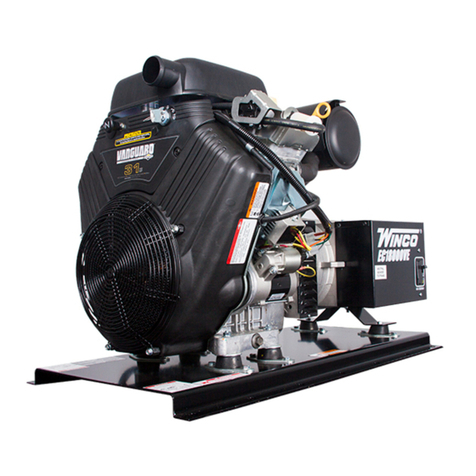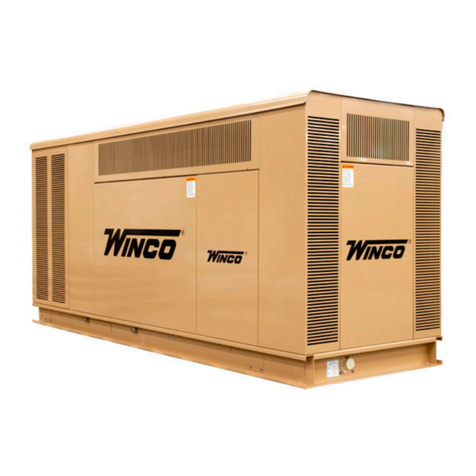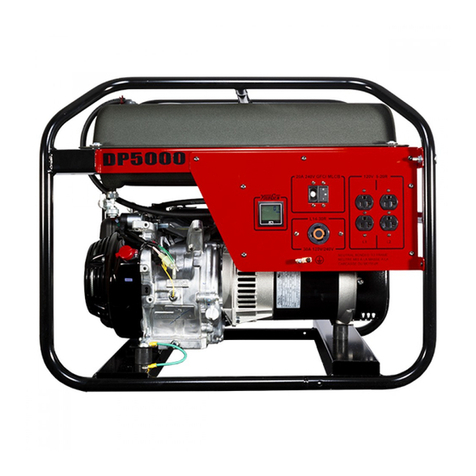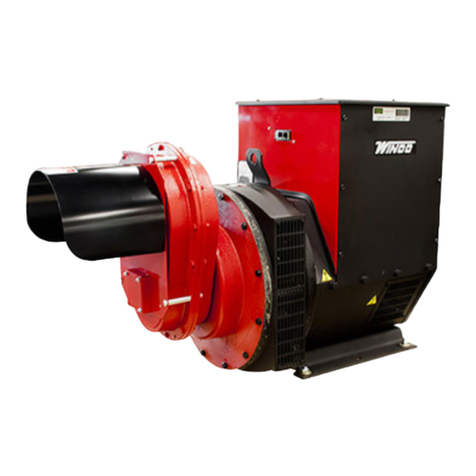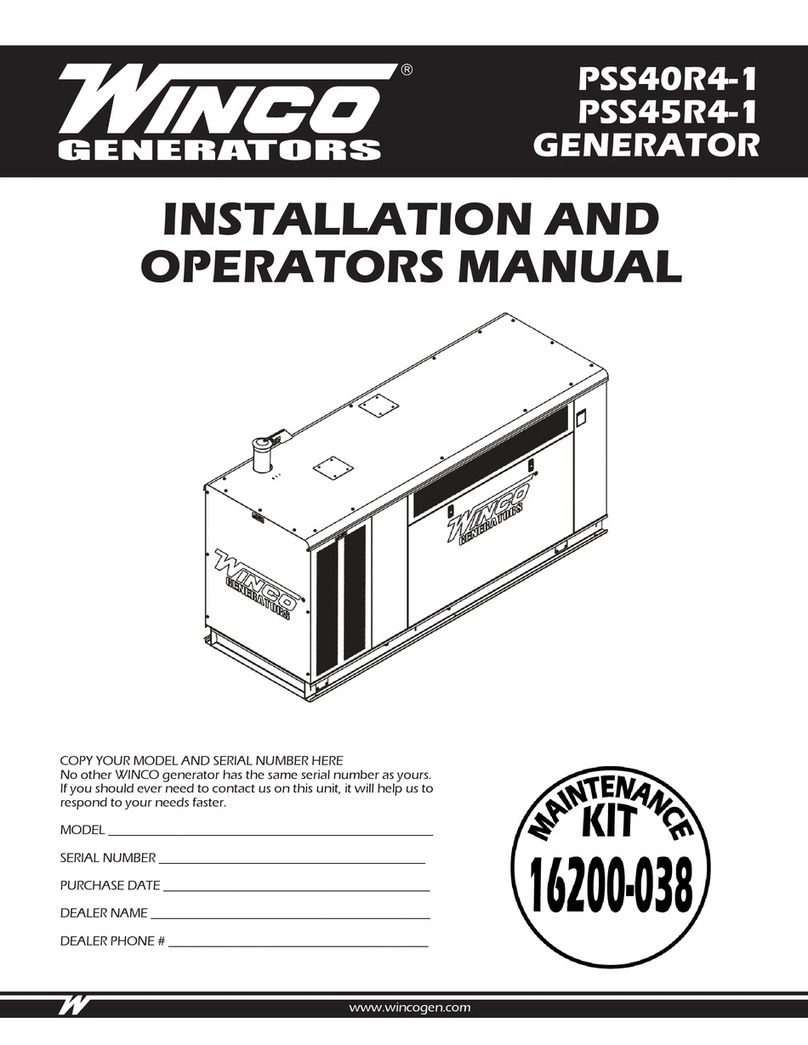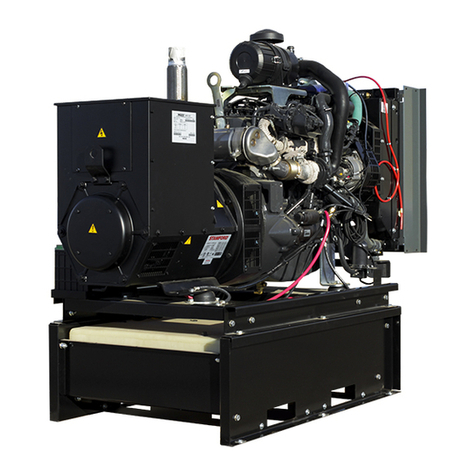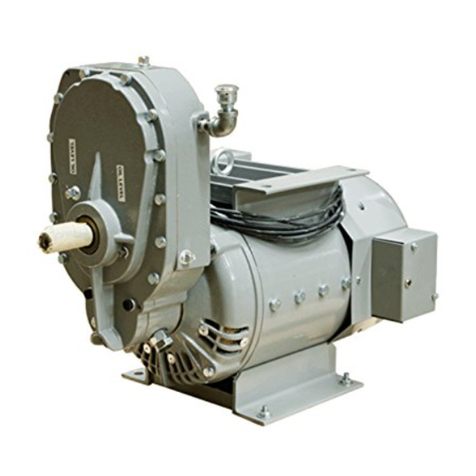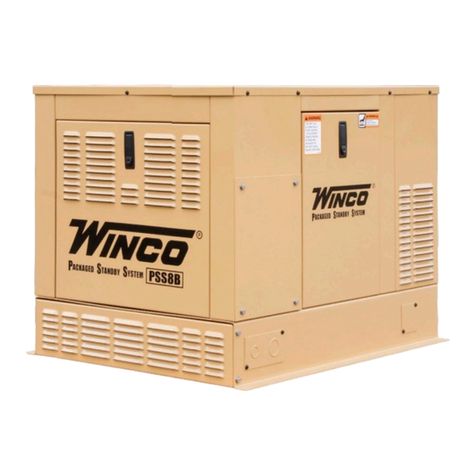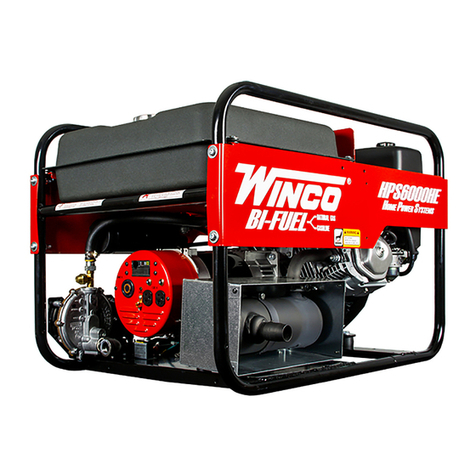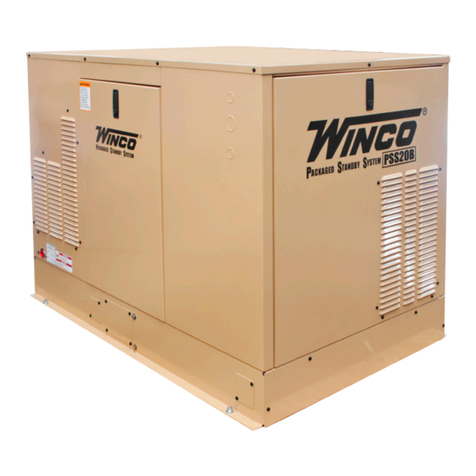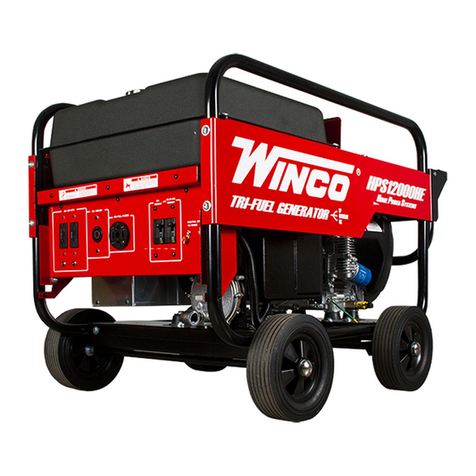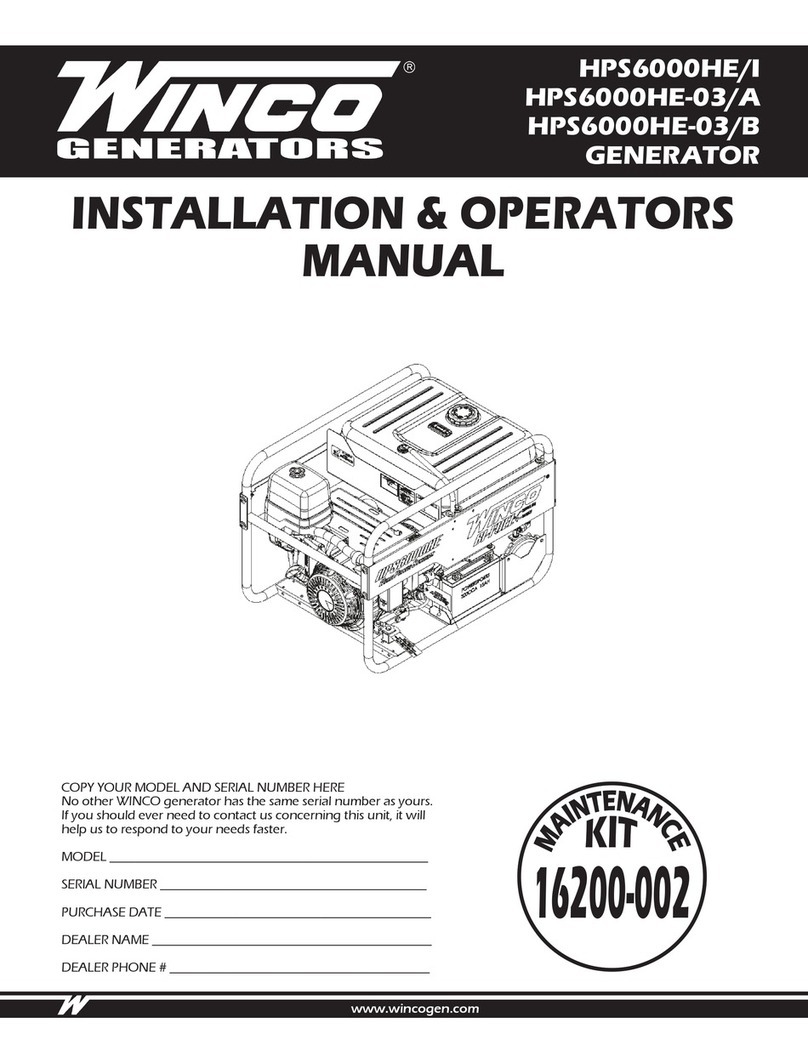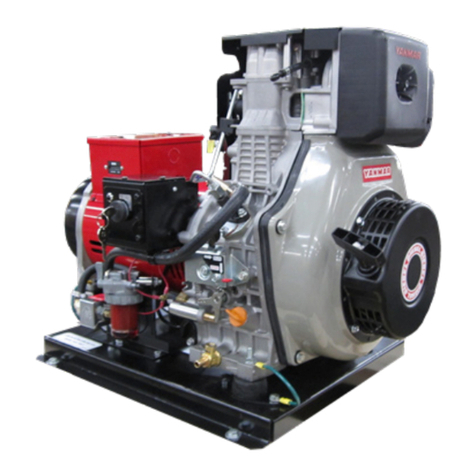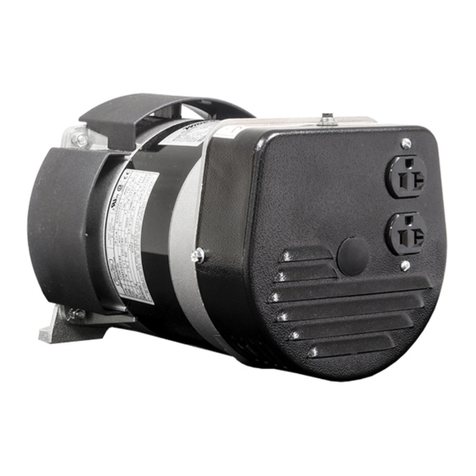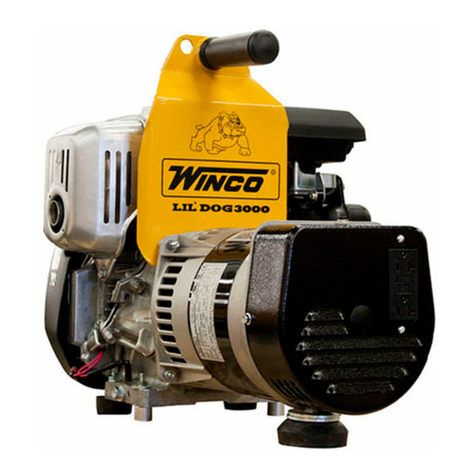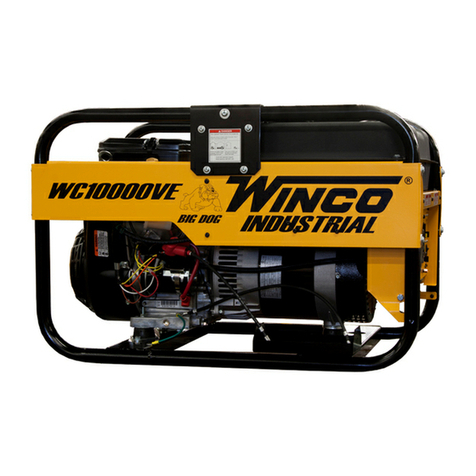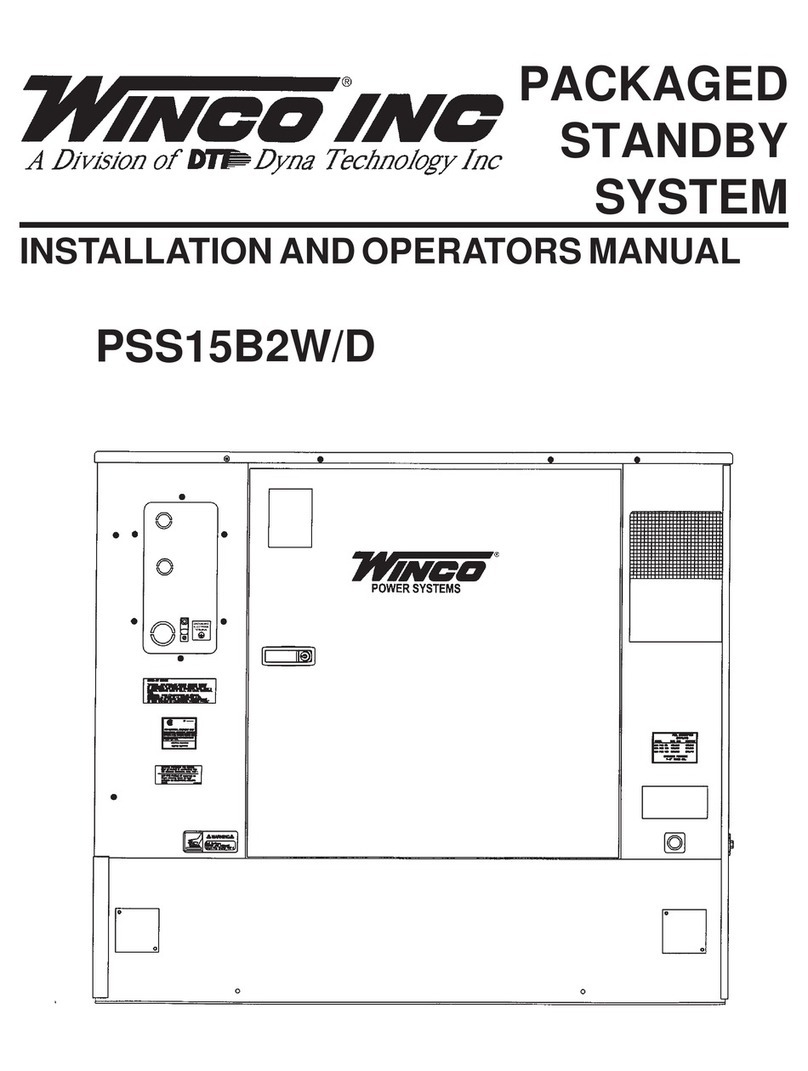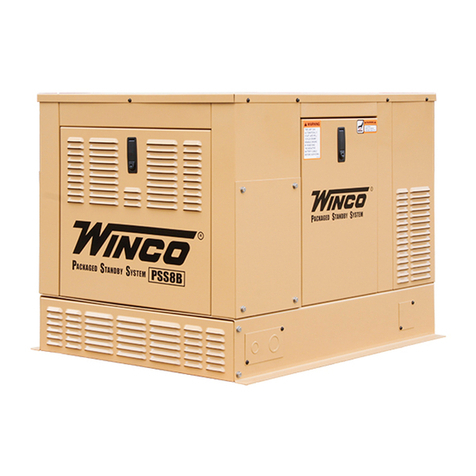increased. The resulting decrease in gen-
erator speed may cause lights to be dim
V.
ENGINES
and appliances to be lacking in power.
(See engine instructions regarding gov-
ernor).
On an average the frequency and voltage
will drop approximately as shown in Fig-
ure 11 c;n these units when driven with
engines normally supplied. Larger engines
which maintain better speed control tend
to maintain better voltage stability.
Speed
-
The speed of the generator is extremely
important and should never be below 3450
rpm. If the generator speed is too low, it
will not produce its rated output and, if
fully loaded, will heat excessively. If low
voltage under load is encountered, be sure
to check tine generator speed with an ac-
curate tachometer before concluding that
the generator is defective.
The generators supplied with engines
have the governor set to produce a gen-
erator speed of 3600 rpm at approximately
60% of rated output and should not be
readjusted unless it is done with an ac-
:urate tachometer. Excessive speed not
only produces added strain on generators,
but abnormally high voltage also materi-
ally shortens the life of the elgctrical de-
vices used. Even though generators may
be equipped with klixon thermostatic over-
load switches or fuses, they can be over-
loaded if run at excessive swed.
Overload Protection
The 1000 watt models are equipped with
klixon thermostatic switches. If the switch
opens due to overload, the generator should
be allowed to cool for several minutes, and
the red button adjacent to the outlet box
pressed down. If the generator has been
allowed to cool sufficiently, the switch can
be snapped back in place, thus completing
the circuit.
ENGINES
ON
AC
GENERATORS
ARE
SHIPPED WITHOUT OIL. Be sure to fill
the crankcase to the proper level and fill
the gasoline tank before starting. See en-
gine instruction book for grade and type
of oil.
Engine operating and maintenance man-
uals furnished by the engine manufac-
turer are supplied with all units shipped
with engines. Be sure to follow these in-
structions. If the generator was obtained
separately, also be sure to obtain the en-
gine manual. In case of engine trouble
contact engine manufacturer's local repre-
sentatives for assistance or repair parts.
V1. POWER REQUIREMENTS
The maximum wattage for each of the
units covered by this manual is given on
Page 2. Engines of different manufacture
and of larger capacity can be used, but
the electric load should not exceed fhe
maximum wattage shown for sustained
operation. Smaller engines than shown on
the table on Page 2 can be used for any
model, but the electric load must be re-
duced proportionately. For example, on
the 2000 watt mddels any engine from one
H.P.
can be used. Such engines, however,
would not have adequate power to furnish
the current required to start motors. (See
"Use of
AC
Motors").
If the engine used to drive the generator
does not have sufficient power to drive the
generator in areas of high altitude and
high temperature, it is important to re-
member that engines lose power at the
rate of about
3%
for each 1000 feet of
altitude and 1% for each 10 degrees above
60 degrees Fahrenheit at sea level. In addi-
tion to this, a good quality fuel must be
used to get the full rateh output from any
engine. Most engine manufacturers rec-
ommend that the engine load should not
exceed
85%
of rated horsepower.
VII.
USE OF
A.C.
MOTORS
The maximum rated wattage of the gen-
erators for starting motors is given in the
tabie on Page
2.
For the same motor size,
split-phase motors such as are normally
used on washing machines, refrigerators,
etc., require more starting current than
others such as capacitor-start and induc-
tion-repulsion types. In general the power
requirements for starting and running vari-
ous sizes of electric motors is approximate-
ly as follows:
H.P.
Running
Starting
1/8 200
The 500 watt models are not equipped l/6 300 900-1500
with any type of overload protection. The 1/4 400 1200-2000
1/3
load line should be fused using fuses of 450 1350-2250
suitable type and capacity. 600 1800-3000
